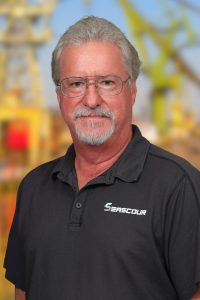Seascour Protects Vessels And The Environment
Fouling is as sure as a river flowing toward the sea. Any vessel operating in a marine environment will experience fouling from barnacles, mineral deposits or corrosion.
That’s where marine scale removers come in. Descalers are applied to keel coolers, heating and cooling systems, hulls, propellers, pumps, compressors, etc., to rid those components of calcium and lime buildup, barnacles, mussels, seashells and other mineral deposits.
“It happens anywhere you have heat exchanging,” said Patrick Baymont, founder of Seascour Marine Descaler.

But not all descalers function the same. Many descalers on the market use inorganic or mineral acids like hydrochloric acid or phosphoric acid to dissolve fouling. The process can be time consuming, with heat exchangers and related piping having to be removed and sent away. Conventional descalers can also be harmful to the environment if the solution is flushed into an adjacent waterway. Hydrochloric acid can strip away heavy metals, and phosphoric acid can promote algae growth, which in turn leads to algae blooms and hypoxia.
“They’re not as effective and they cause a lot of damage,” Baymont said of those inorganic descalers.
Fouling clogs heat exchangers, increasing pressure and operating temperatures in pumps, which can also shorten their operating life. Baymont said the labor intensity of removing, transporting, cleaning and re-placing keel coolers makes using traditional descalers expensive.
Baymont developed Seascour to function differently.
“Everything in my product came from the environment, so we’re just recycling it,” Baymont said.
Rather than removing keel coolers or other heat exchangers, with Seascour, crews circulate the product through a closed system with a pump. Seascour breaks the bond between calcium and carbonate, thus returning heat exchangers to like-new function.
Also, unlike inorganic descalers, Seascour allows vessel operators to apply the product at the shipyard as part of a routine maintenance or overhaul schedule, or even dockside during regular downtime, thus saving time and labor.
Baymont pointed to a number of case studies that showcase the effectiveness of Seascour. One involved Savage Marine’s tanker Sulphur Enterprise. During an overhaul, Savage overhauled two of the Sulphur Enterprise’s four plate heat exchangers the conventional way and used Seascour’s “clean in place” method for the other two. When comparing the two methods, the company found that the Seascour-treated keel coolers were “well within normal operating ranges” compared to the other two. Thus, the company has added regular clean-in-place maintenance to the vessel’s regular maintenance program.
Another case study involved treating the refrigeration heat exchangers aboard the U.S. Coast Guard Cutter Valiant. According to Baymont, the standard process would have involved removing deck plating, dismantling piping and shipping it to the West Coast for cleaning, a process that would take up to three weeks and cost tens of thousands of dollars. With Seascour, the entire process was set up and complete within an hour, with no added welding, disassembly or pressure testing required.
The simplicity and brevity of the process inspired Baymont’s unofficial slogan for Seascour—“Laziness is encouraged.”
It’s not just time and cost that sets Seascour apart, Baymont said. Seascour’s organic, non-toxic formula has earned it an EPA Safer Choice certification. As such, Seascour requires no special disposal procedures, meaning no cumbersome handling, treatment or disposal regulations.
Seascour is applicable for all maritime markets, from offshore vessels and inland towboats to sailing vessels and recreational watercraft. The company’s distributor network currently covers the Gulf Coast, East Coast, Canadian waters and the Midwest.
For more information, visit www.seascour.com.



